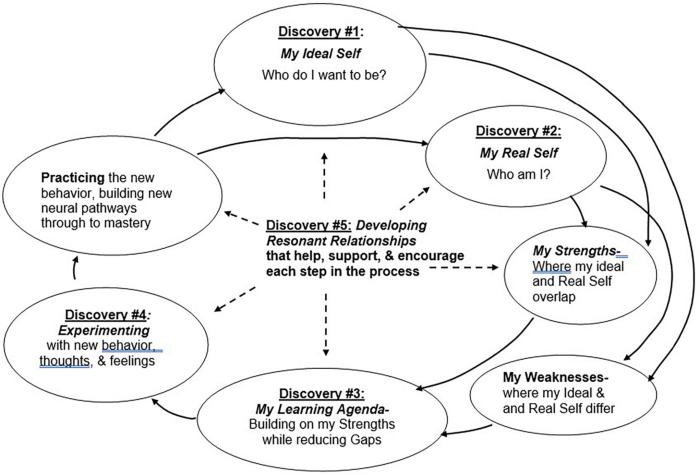
Self-Publishing has become a game-changer for authors wanting full control over their work. If you’ve ever imagined your story on the shelves or in digital format without the hurdles of traditional publishing, you’re not alone! The rise of self-publishing has opened doors for countless writers to share their voices with the world.
This method allows authors to bypass the lengthy submission processes and maintain creative rights while discovering various platforms that make publishing accessible and straightforward. With the right tools and resources, anyone can embark on this exciting journey.
Overview of Self-Publishing

Self-publishing has transformed the literary landscape, allowing authors to take control of their work without the need for traditional publishing houses. This shift has been fueled by advances in technology and the proliferation of digital platforms, making it easier for writers to publish their work and reach a global audience. The rise in self-publishing is marked by an increasing number of authors choosing this route over conventional publishing methods.
The advantages of self-publishing are noteworthy. Authors retain full ownership of their intellectual property, allowing them to make decisions about their work and its distribution. Financial benefits also play a significant role, as self-published authors often earn higher royalties than their traditionally published counterparts. However, self-publishing comes with its challenges. Writers must take on multiple roles, including that of editor, marketer, and distributor, which can be overwhelming without adequate resources or knowledge.
Advantages and Disadvantages of Self-Publishing
Understanding the pros and cons of self-publishing is crucial for authors considering this path. Here are the key points:
- Advantages:
- Creative Control: Authors have complete creative control over their content, cover design, and marketing strategies.
- Higher Royalties: Self-published authors typically receive a larger percentage of the sales revenue compared to traditional publishing.
- Faster Time to Market: The self-publishing process can be significantly quicker, allowing authors to publish their work soon after completion.
- Global Reach: Digital platforms enable authors to reach a worldwide audience without geographical restrictions.
- Disadvantages:
- Cost Responsibility: Authors must cover all costs for editing, design, and marketing, which can add up.
- Limited Distribution: Self-published books may not receive the same level of distribution as those handled by traditional publishers.
- Marketing Efforts: Authors must actively market their work, which requires time, effort, and sometimes specialized skills.
- Credibility Challenges: Some readers may perceive self-published works as lower quality compared to traditionally published books.
Key Platforms for Self-Publishing
Various platforms cater to self-publishing authors, each offering unique features and benefits. Familiarizing oneself with these options can help authors choose the right fit for their needs.
- Amazon Kindle Direct Publishing (KDP): A widely-used platform that allows authors to publish eBooks and paperbacks. KDP offers tools for formatting and marketing with a vast audience reach.
- Smashwords: This platform specializes in eBook publishing and distribution across numerous retailers. It provides a user-friendly interface and flexible formatting options.
- Lulu: Known for print-on-demand services, Lulu allows authors to create both eBooks and physical books. It provides customizable options for book formats and sizes.
- IngramSpark: A platform focused on print and distribution, IngramSpark is ideal for authors seeking widespread distribution in bookstores and libraries.
“Self-publishing empowers authors to control their narrative and connect directly with readers.”
Employment and Work in Self-Publishing

Self-publishing has transformed the landscape of the publishing industry, creating a plethora of job opportunities for individuals seeking careers in various roles. The accessibility of self-publishing platforms has enabled authors to take charge of their work, which in turn has led to increased demand for skilled professionals to support these authors. As self-publishing continues to flourish, understanding the employment possibilities within this space is essential.
Job Roles in Self-Publishing
The self-publishing industry offers a diverse array of job roles that cater to different skill sets and interests. From writing to marketing, the possibilities are abundant. Some key roles include:
- Editor: Editors play a crucial role in refining manuscripts, ensuring clarity and coherence. They can specialize in developmental editing, copyediting, or proofreading.
- Book Designer: Book designers create visually appealing layouts and covers that capture the essence of a book. This role requires a keen eye for aesthetics and knowledge of design software.
- Marketing Specialist: These professionals help authors promote their books through social media, email campaigns, and advertising strategies, making them essential for increasing book visibility.
- Formatters: Formatters prepare manuscripts for publication in various formats, such as eBooks and print, ensuring compatibility with different platforms.
- Self-Publishing Consultants: Consultants guide authors through the self-publishing process, providing insights on best practices and strategies for success.
Understanding and pursuing these roles can lead to fulfilling career paths within the self-publishing arena.
Creating a Freelance Career in Editing and Design
Freelancing within the self-publishing industry allows individuals to build flexible and rewarding careers. For those interested in editing and design, here are steps to establish a successful freelance business:
- Develop Skills: Gain expertise in editing and design by taking relevant courses, participating in workshops, and practicing on real manuscripts.
- Build a Portfolio: Showcase your work through a portfolio that highlights your skills. Include samples of edited manuscripts, book covers, and any notable projects.
- Network: Connect with authors, fellow freelancers, and industry professionals. Attend writing conferences, join online communities, and engage in social media discussions.
- Market Yourself: Create a professional website, utilize social media platforms, and consider offering free or discounted services to build initial client relationships.
- Set Clear Terms: Establish clear contracts that Artikel your services, payment terms, and project timelines to ensure smooth collaborations with authors.
This approach not only enhances your visibility but also builds credibility in the competitive self-publishing market.
Economic Impact of Self-Publishing on the Job Market
The rise of self-publishing has had a significant economic impact on the job market within the publishing industry. It has opened opportunities for individuals who may have previously been excluded from traditional publishing roles. The self-publishing sector continues to grow, with reports indicating that self-published books generated billions in revenue, leading to job creation in various related fields.
The self-publishing industry has become a vital component of the overall publishing landscape, contributing to a more dynamic job market.
As the demand for self-published books increases, so does the need for skilled professionals in editing, design, marketing, and consulting. This growth not only benefits freelancers and small businesses but also contributes to the overall economy, showcasing the power of self-publishing in reshaping the publishing industry and creating new career opportunities.
Tools and Resources for Successful Self-Publishing
Self-publishing can be a rewarding venture, but it requires the right tools and resources to ensure a smooth and successful journey. From drafting your manuscript to marketing your final product, leveraging the right technology can make all the difference. This section discusses essential writing and design tools, compares popular self-publishing platforms, and highlights crucial services that support self-publishers.
Essential Writing and Design Tools
Creating a polished manuscript and appealing book cover is essential for capturing readers’ attention. Here are some tools that can help streamline the writing and design processes:
- Scrivener: Ideal for organizing long writing projects, Scrivener allows authors to Artikel, draft, and format their manuscripts all in one place.
- Grammarly: This writing assistant provides real-time grammar and style suggestions, ensuring your text is polished before publication.
- Canva: A user-friendly graphic design tool, Canva offers templates for book covers, promotional materials, and social media graphics.
- Vellum: Vellum is particularly popular among Mac users for its elegant formatting options, making it easy to create professional-quality eBooks and print books.
- Google Docs: This cloud-based document editor allows for easy collaboration and ensures your work can be accessed from anywhere.
Comparison of Self-Publishing Platforms
Choosing the right self-publishing platform is crucial, as it impacts distribution, royalties, and user experience. Below is a comparison of popular platforms based on user-friendliness, cost, and distribution options:
| Platform | User-Friendliness | Cost | Distribution Options |
|---|---|---|---|
| Amazon Kindle Direct Publishing | Very Easy | Free to publish; 30% to 65% royalties | Global distribution on Amazon |
| IngramSpark | Moderate | $49 setup fee; royalties vary | Wide distribution to bookstores and libraries |
| Kobo Writing Life | Easy | Free to publish; 70% royalties | Distribution primarily through Kobo and partner sites |
| Smashwords | Moderate | Free to publish; 60% royalties | Wide distribution across eBook retailers |
| Draft2Digital | Very Easy | Free to publish; 10% cut of royalties | Distributes to multiple eBook retailers |
Crucial Services for Self-Publishers
While writing and design are important, additional services can greatly enhance the quality of your book and its marketing potential. Here are some essential services that every self-publisher should consider:
- Proofreading: Professional proofreading ensures that your manuscript is free from errors and typos, which can detract from the reader’s experience.
- Editing: A good editor can help refine your writing, strengthen your narrative, and provide constructive feedback that improves your manuscript.
- Book Cover Design: Investing in a professional cover design is essential, as it plays a key role in attracting potential readers.
- Marketing Services: From social media advertising to email campaigns, marketing services can help promote your book effectively to reach your target audience.
- Author Branding: Building a personal brand as an author can help establish your presence, creating a loyal readership that follows your work.
Closing Summary
In conclusion, self-publishing not only empowers writers but also shapes the future of the publishing industry. With a landscape filled with opportunities, aspiring authors can carve their paths while embracing the challenges and rewards of self-publishing. So, grab your pen (or keyboard) and get started on your journey!
Answers to Common Questions
What is self-publishing?
Self-publishing is the process where authors publish their works independently, without going through traditional publishing houses.
Do I need an ISBN for self-publishing?
While it’s not strictly necessary, having an ISBN is recommended as it helps with book distribution and sales tracking.
How do I market my self-published book?
You can market your book through social media, author websites, book signings, and connecting with review bloggers.
Can I still submit my book to traditional publishers after self-publishing?
Yes, but be aware that some publishers may not accept works that have already been self-published.
What are the costs associated with self-publishing?
Costs can vary widely, but common expenses include editing, cover design, formatting, and marketing.





